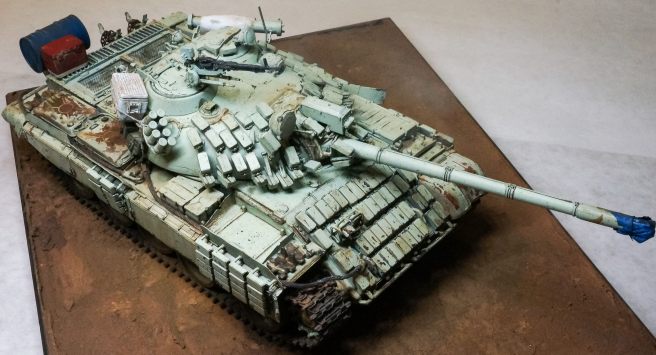Kit by Flyhawk Models, magic by JandersUF

Kit by Flyhawk Models, magic by JandersUF

JandersUF has created another tank model that looks like it had a “good” time 🙂
As you treat your selves with this piece, feel free to ask questions about it, tank modeling in general etc. and JandersUF will answer these questions in next tank model post (Sunday)!
Meanwhile check his IMGUR & IG
Continue reading “Panther Ausf. D model and Q&A”
Again, JandersUF master tank modeler strikes (check his IG):

Continue reading “Meng Char2c 1:35 Model”
JandersUF is back with another model masterpiece.

The JagdPanzer IV / L48 was an early variant of a casemate-type tank-destroyer [turretless tank] produced on a Panzer IV chassis by the Germans in mid-WW2. These offered a more economical production with similar anti-tank performance to the Panzer IV, with excellent frontal armor protection and a low silhouette excellent for ambush and defensive tactics. In exchange they lost the flexibility of a turret, and some degree of offensive and anti-infantry performance due to slow gun handling and lesser tactical mobility and engagement parameters. It was later upgraded to the Lang L/70 version with a longer gun with improved anti-tank performance, along with sundry other minor changes. For example, the return rollers were reduced in number from four to three to simplify production. This particular vehicle is an example of 1943-44 production. Some of these were recovered after the war, and restored for use by a number of countries. Eventually six were sold by Czechoslovakia to Syria in the 1950s in an arms package along with Hummel self-propelled artillery pieces and multiple Panzer IVs. In 1967 these six vehicles, along with multiple other >20year old German WW2 relics, were used to attack Israel in the Six Day War. One was known to be knocked out, the other 5 likely were pulled back prior to significant action, but the full story is not known.
warning – picture heavy post!
Continue reading “Syrian Jagdpanzer IV in the Six Day War – model”
JandersUF is back with another model masterpiece.

The JagdPanzer IV / L48 was an early variant of a casemate-type tank-destroyer [turretless tank] produced on a Panzer IV chassis by the Germans in mid-WW2. These offered a more economical production with similar anti-tank performance to the Panzer IV, with excellent frontal armor protection and a low silhouette excellent for ambush and defensive tactics. In exchange they lost the flexibility of a turret, and some degree of offensive and anti-infantry performance due to slow gun handling and lesser tactical mobility and engagement parameters. It was later upgraded to the Lang L/70 version with a longer gun with improved anti-tank performance, along with sundry other minor changes. For example, the return rollers were reduced in number from four to three to simplify production. This particular vehicle is an example of 1943-44 production. Some of these were recovered after the war, and restored for use by a number of countries. Eventually six were sold by Czechoslovakia to Syria in the 1950s in an arms package along with Hummel self-propelled artillery pieces and multiple Panzer IVs. In 1967 these six vehicles, along with multiple other >20year old German WW2 relics, were used to attack Israel in the Six Day War. One was known to be knocked out, the other 5 likely were pulled back prior to significant action, but the full story is not known.
warning – picture heavy post!
Continue reading “Syrian Jagdpanzer IV in the Six Day War – model”
WG is doing a nice job by weathering and “seasoning” our tanks so they don’t look like plastic models, but here is masterpiece of wear and tear by JandersUF

warning – picture heavy post!
Continue reading “Weathering T-55AMV Model, Takom 1:35”

